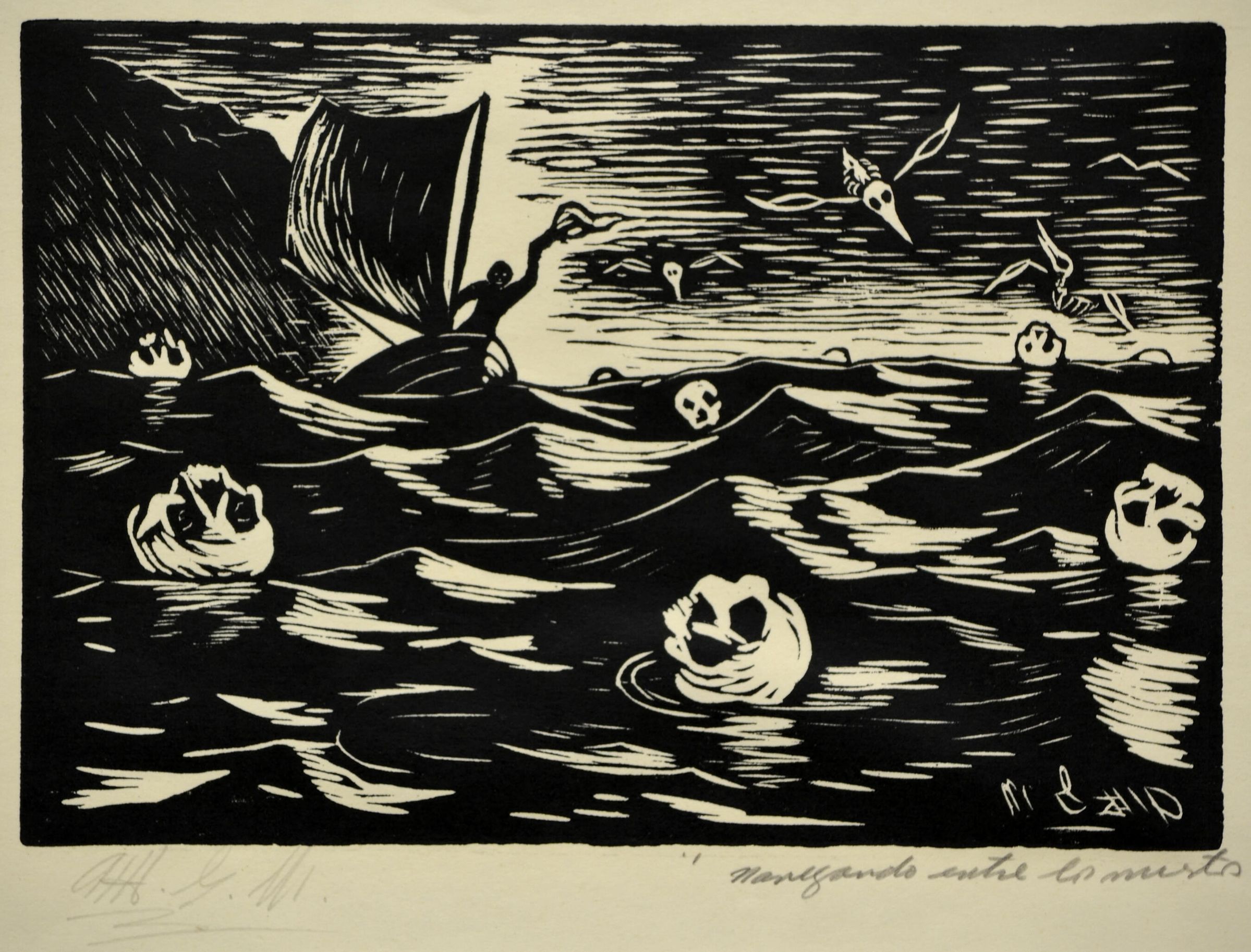Label
Notes: Myth & Nature/Life & Death
Alberto Garcia M.'s Images of Mexico's Yucatán
Visitors to the Yucatán peninsula of southeastern Mexico often remark that, compared to the rest of the country, the Yucatán is "A world apart" - un otro mundo. This is true geographically; the peninsula is cut off from central Mexico by sea, great distances and a forbidding, unique landscape. The Yucatán also retains much of its pre-Hispanic heritage, is home to a number of important Mayan archaeological sites, and the Mayan language continues to be spoken throughout the state, as well as in Mérida, the capital.
If the Yucatán is a virtual island in the Mexican nation, the artist Alberto Garcia M. presently appears isolated from the mainstream art history of Mexico. With this exhibit he is a "discovery," at least from a North American perspective. Adding to the mystery, the woodcuts and etchings on exhibit here were found - of all places - at a small auction in Mayetta, Kansas. The auctioneer claimed to have acquired the 29 works at an earlier auction. Most of the works are signed "Alberto Garcia M," or with his initials. To date no one knows what the "M." stands for. A number of prints are also inscribed with "Mérida, Yucatán," indicating either that the works were made in the capital or that Garcia lived there - or both. Their dates and the style of the imagery indicate that they were produced in the late 1940s up to 1951.
There is, however, one clue to the presence of these works in the U.S., a dedication upon one to their apparent recipient, translated, "to my most esteemed friend, Lester C. Lasky. Sincerely, A.G.M." An internet search found a man with this name attached to a memorial scholarship at Bethany College, Lindsborg, Kansas. Can one surmise that Lasky, a Kansan, traveled to Mérida in the early 1950s, met Garcia, became enthusiastic about his art, and acquired a large body of his work that he brought back with him? When Lasky died, his heirs may have found Garcia's work too morbid or intense and put them in an estate sale where they began their circuitous journey to the Mulvane.
Another important indicator is the style and content of Garcia's prints; they closely correspond to the graphic art production of the artists' printmaking collective El Taller de Gráfica Popular in Mexico City (TGP, or Workshop for Populist Graphic. See the linoleum cut by TGP artist Angel Bracho in the Anton Gallery - North). The TGP flourished from 1938 to 1960 and paralleled the activity of the Mexican muralist, Diego Rivera, David Alfaro Siqueiros and José Clemente Orozco. Both the muralists and the TPG artists were committed to re-invigorating the ideals of the Mexican Revolution along socialist and nationalistic lines. Like the official artists in the Soviet Union, they used a heroic figurative and narrative style called "social realism." Unlike their Soviet counterparts, however, the Mexican artists embraced the pre-Columbian mythic and artistic traditions of the Mesoamerican civilizations - traditions viewed as "retrogressive" and "superstitious" by the Soviets. In addition, the TGP claimed to be the inheritors of the populist graphic art legacy of José Guadalupe Posada (1852 - 1913), a folk illustrator and political cartoonist active in Mexico City.
Based on his imagery, the Yucatecan Garcia appears to have been influenced by the TGP, and may have studied with the collective in the 1940s. As with the TGP artists, most of his prints are woodcuts. Images with satirical animated skeletons (Calaveras) like "Coax, coax" and "Concert Funebre" (Funeral Concert) draw directly on Posada's iconography where death is seen in Garcia's "Mercado" (Market). Mayan traditions are treated in iconic depiction of sacred trees and plants, including "Henequen," a major crop in the Yucatán used for making rope; "El Chac-mool" depicts an event in the exploits of the Mayan god of rain. "Historia" with its heroic nude figures rising skyward derives from the imagery of the Mexican muralists.
On occasion, Garcia departed from typical TGP imagery and explored European modernism. One such work is "Preludio Intimo" (Intimate Prelude) an erotic work that unabashedly takes its inspiration from Henri Matisse and Pablo Picasso.
The Mulvane Art Museum and Washburn University are grateful to the perceptive eye of Bill Ansley, President of the Friends of the Mulvane Art Museum, who discovered the works of Alberto Garcia M. and purchased them for the collection. Together they form an important study and display collection that opens up an intriguing chapter in the mid-20th Mexican art history.
Into from Text Panel - By Gordon Fuglie
